Global experts unite at Building Simulation 2025
The 2025 Building Simulation Conference – co-hosted by IBPSA Australasia and AIRAH – brought the world’s brightest minds in the built environment to Brisbane for a week of vital, future-focused discussions.
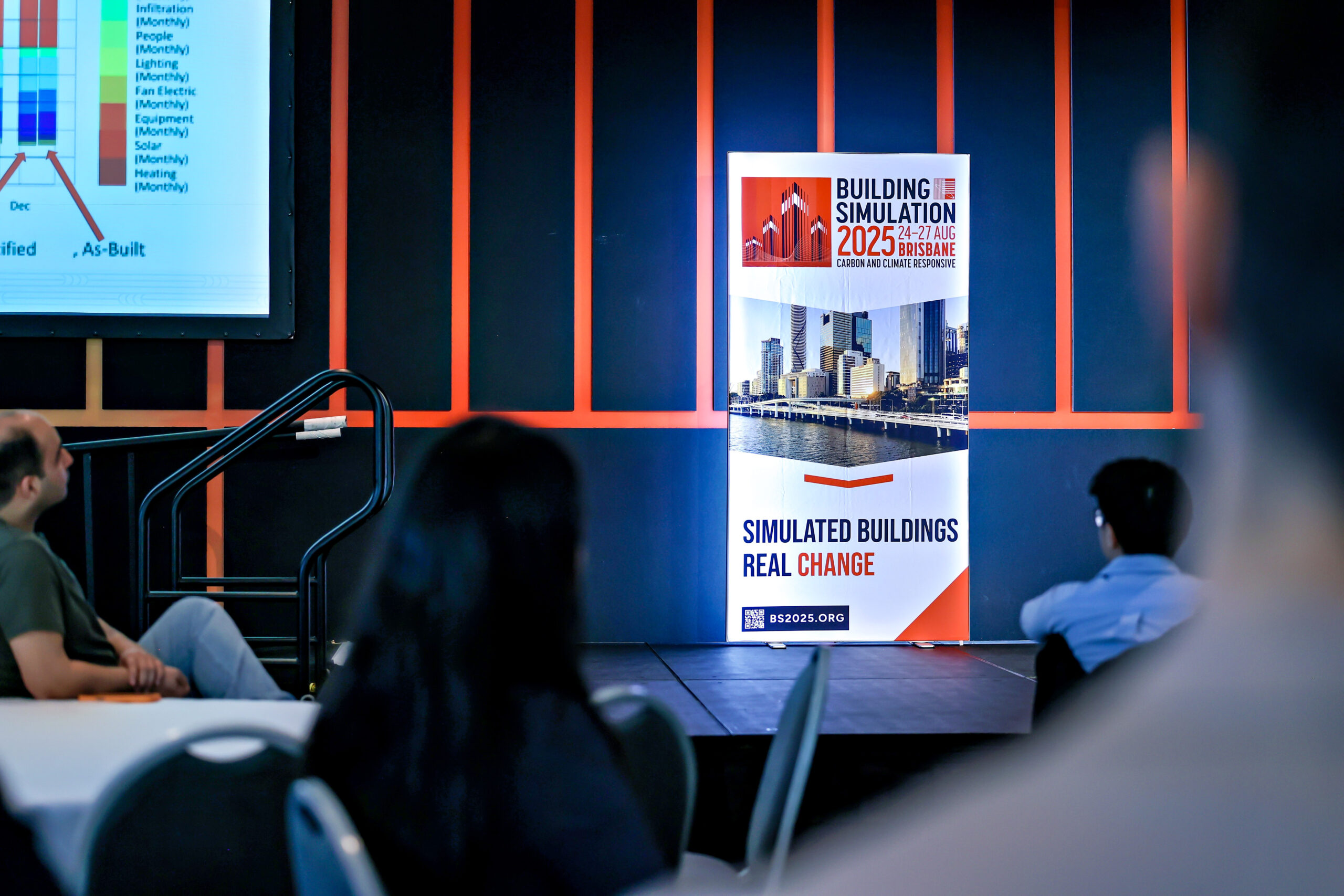
Taking place from August 24–27, with two additional workshops on August 28, Building Simulation 2025 included more than 400 speakers across nine rooms, with hundreds more delegates attending both in person and online.
Highlights included technical advances from researchers and academics, insights from industry leaders, four days of networking, and more…
The world comes to Brisbane
As its name suggests, the International Building Performance Simulation Association (IBPSA) is a global organisation, so its biennial conference attracts delegates from all over the world. Researchers attended from countries including South Korea, China, Japan, Denmark, Germany, France, the UK, the USA, Canada, Slovakia, Poland, India, and of course Australia.
It was a noticeably young and diverse crowd, with a roughly 50/50 gender split. Presenters ranged from senior engineers, academics, and practitioners to PhD students working on the next generation of high-end performance technology. They were united by their passions for using simulation technology to improve outcomes in the built environment.
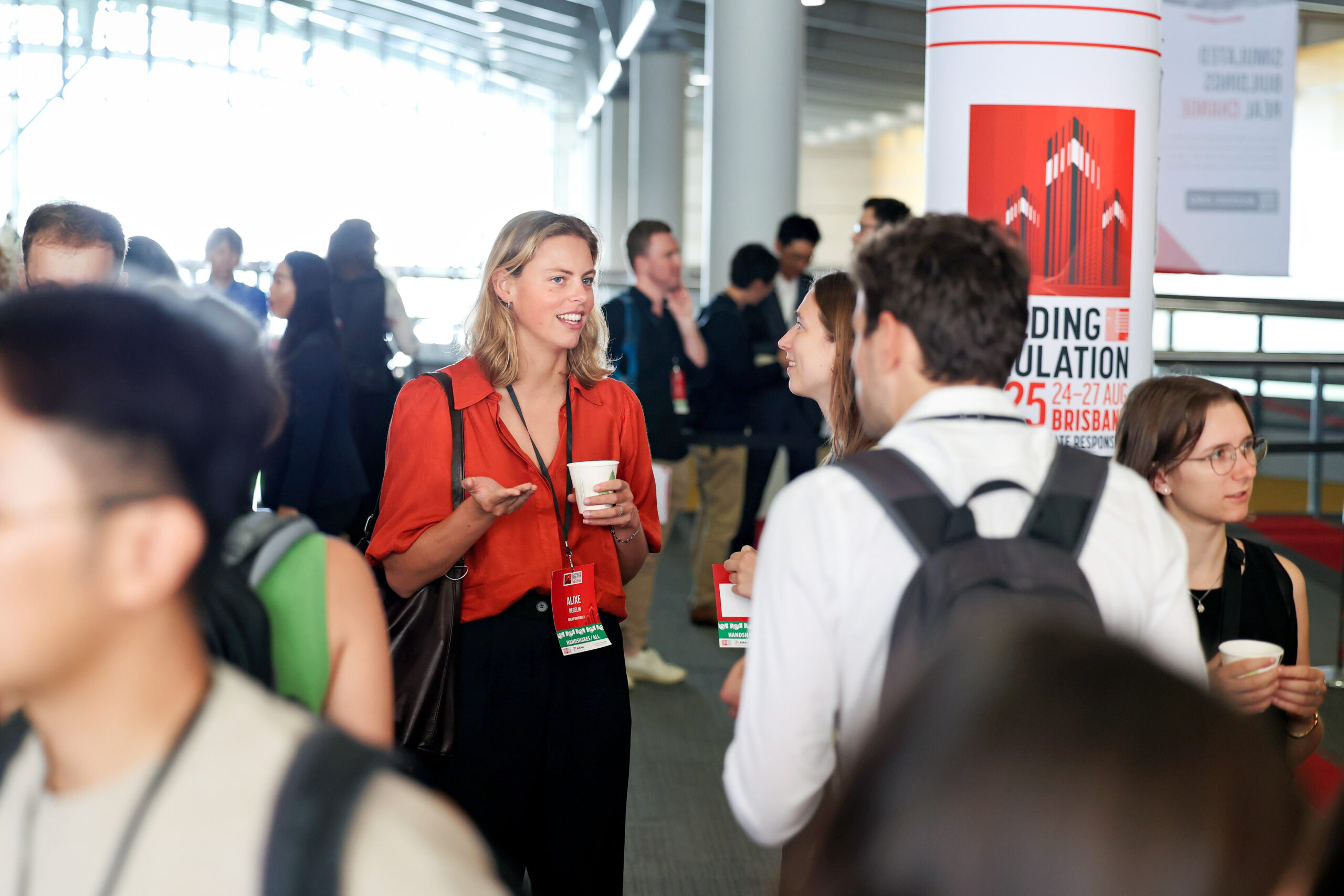

“The conference featured strong technical content, especially around net zero design, urban-scale modelling, and integrated workflows,” says AIRAH Head of Conferences, Events and Business Development Marie Karekla. “Keynotes offered great insight into the future of simulation and climate resilience. The collaboration between researchers and practitioners stood out.”
The bigger picture for building simulation
Any good conference needs top-line keynote speakers, and BS2025 delivered. The Monday morning session kicked off with a message that couldn’t be more important for people working in a highly specialised technical field like simulation.
Associate Professor Jen Martin from the University of Melbourne shared her passion for scientific communication, noting that even the most astounding technological breakthroughs mean nothing unless we can clearly articulate them to the wider world. Martin is the right person to share this message, having hosted a “science explained” radio show in Melbourne for the past 18 years and recently published her first popular science book.
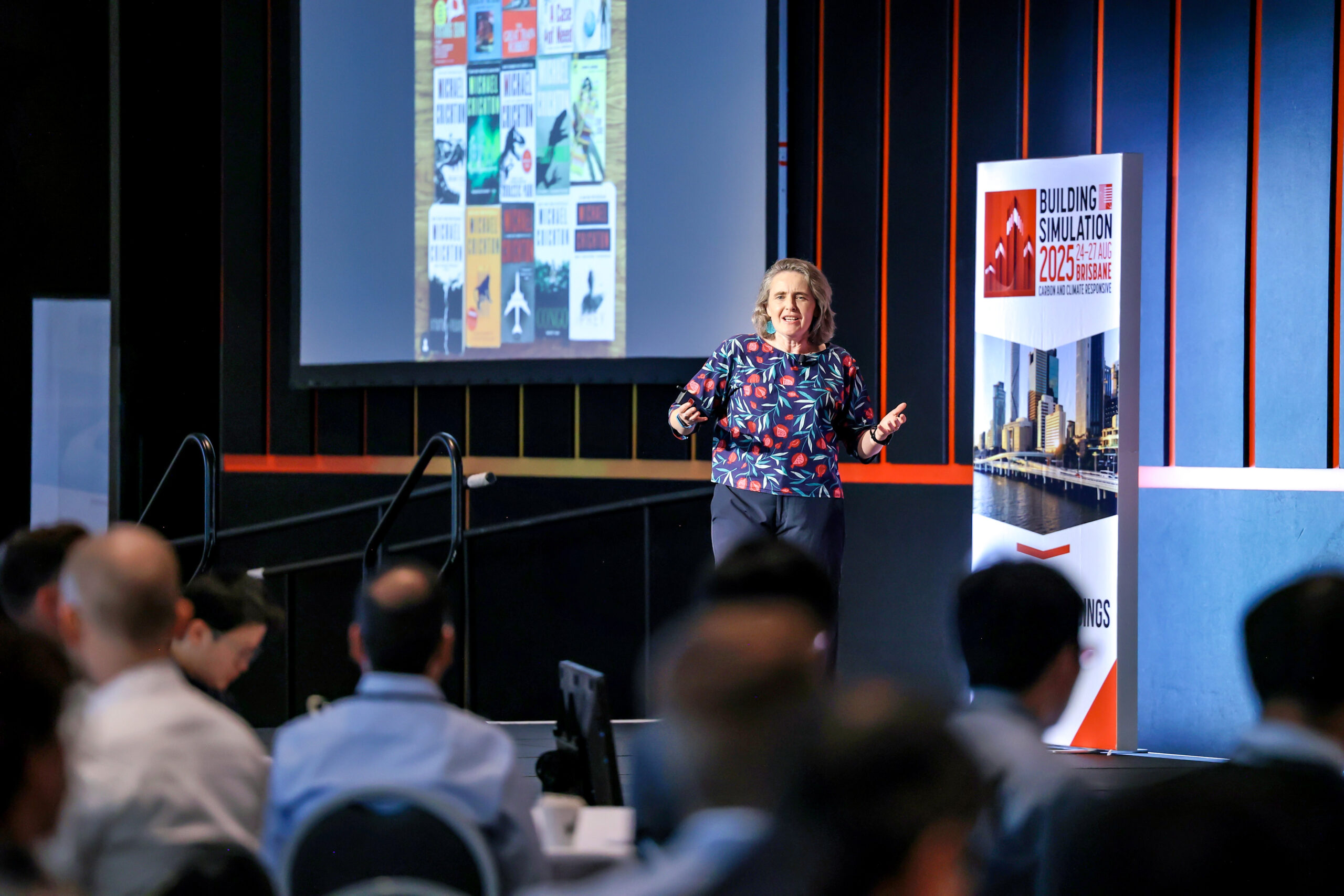

This was followed by Professor Zoltan Nagy from Eindhoven University of Technology, whose presentation focused on the oft-overlooked human element of simulation and the fact that although simulation often focuses on individual buildings, everything is connected. Nagy talked about how occupant-centric approaches can improve energy performance while maintaining comfort, how coordinated building portfolios enable substantial demand response, and how bottom-up city-scale modelling can reveal critical climate policy trade-offs invisible at building level.
Those who attended the plenary session on day three of the conference will have the dulcet tones of Team Catalyst Director PC Thomas singing “Money money money” burnt into their eardrums, probably for the rest of their lives. When he wasn’t doing his best ABBA impression, Thomas gave a fascinating insight into the history and development of Australia’s NABERS rating scheme for commercial buildings.
As Thomas pointed out, the growth of NABERS over the past 25 years has allowed Australia to make real, measured improvements in the operational performance of its building stock. His keynote offered practical advice to help those from other countries implement and grow similar ratings schemes in their own jurisdictions, focusing of course on the most important market drivers: money, money, money.
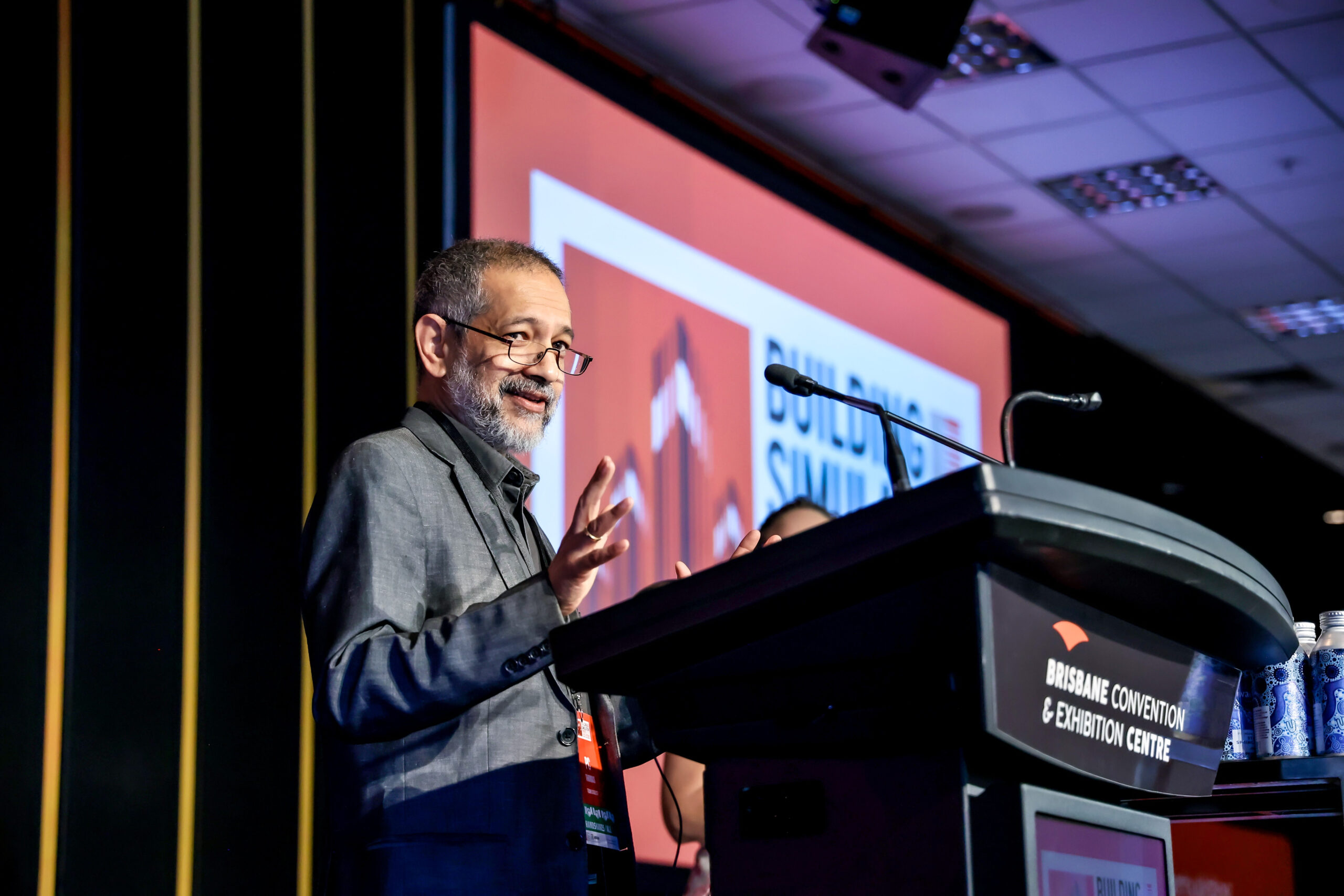



During the same session, simulation superstar Pieter de Wilde from Sweden’s Lund University shared his insights on how AI is affecting building simulation, with a specific focus on machine learning, large language models and digital twins.
The Wednesday keynote speaker was Associate Professor Michael Donn from the Wellington School of Architecture. Donn encouraged those working in building simulation to question whether their current approach is providing information that is useful to building designers, and if not, what they can do to make sure their invaluable work gets applied as it should. He argued that the goal was not to eliminate the gap between simulation and real-world performance, but to understand why it exists, and to seek out the big learnings rather than getting lost in the detail: to hunt the tigers rather than the mice.
Later on Wednesday, a panel of experts talked again about the Australian success story that is the NABERS scheme. Priya Gandhi, M.AIRAH, led a conversation with NABERS Sector Lead Ryan Flack, Atelier Ten Associate Jennifer Elias, Team Catalyst Director GS Rao, DeltaQ Director of Operations and Global Initiatives Grace Foo, M.AIRAH, and Kani Quest Principal Consultant Noni Nuriani (shown from right to left, below).
The panel offered attendees from around the world the opportunity to understand how NABERS drove improvements in building performance, and whether a similar system could work for them.
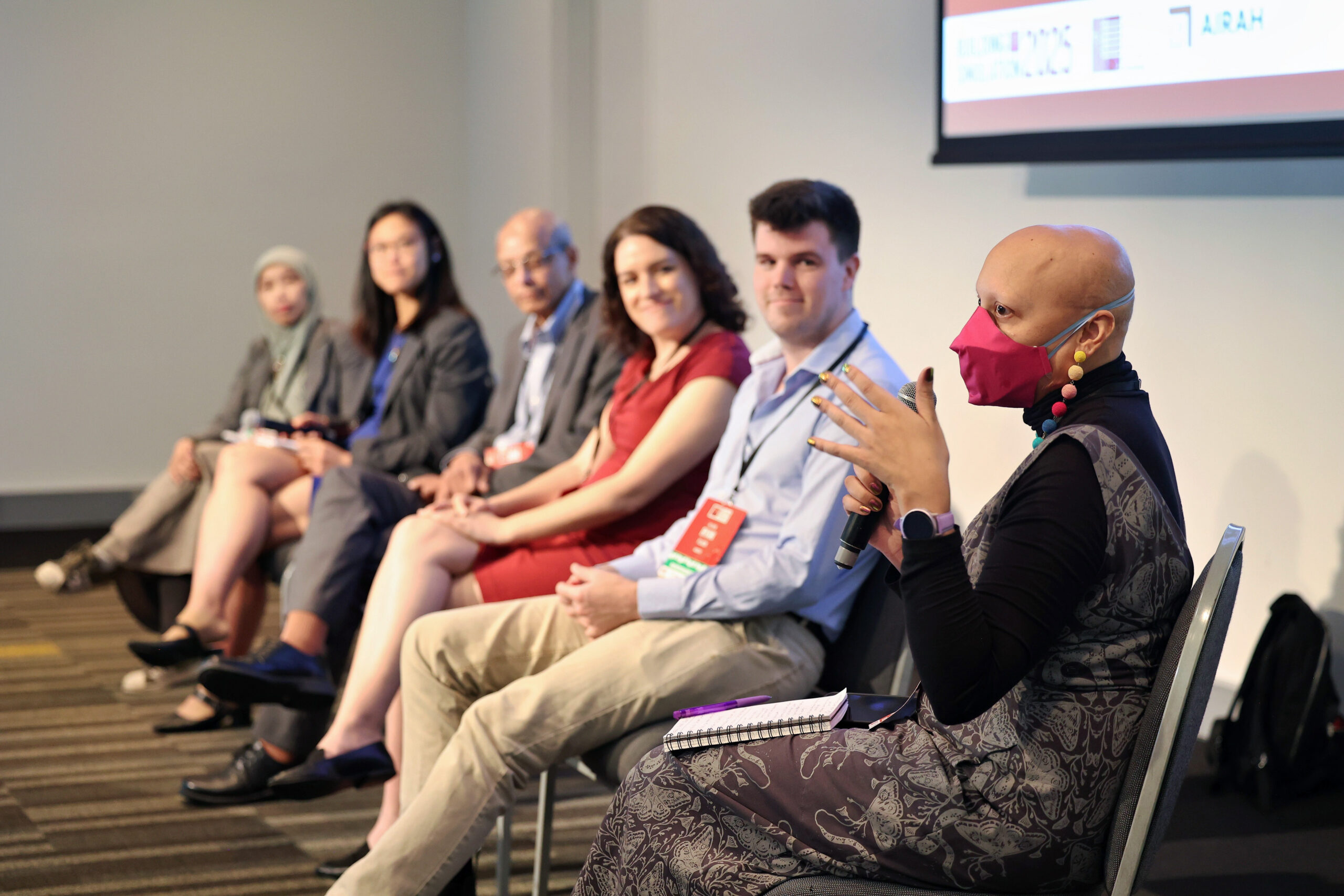

Mind-blowing breakthroughs
Energy efficiency was front of mind at BS2025, with many presenters sharing cutting-edge research aimed at reducing energy use and improving building performance. Among these was Qianru Bi, whose study focused on photovoltaic vacuum glazing (PVVG) – a type of glass design that provides the insulation benefits of multiple-glazing while also generating power that can be used in the building. Bi’s research found that integrating PVVG into commercial buildings could reduce cooling needs by up to 91% under certain conditions and orientations, with a payback period as little as 7.03 years.
Dr Huijun Mao presented on another fascinating innovation taking hold in China: the use of water spray to reduce cooling requirements in glass-roofed public buildings in hot-humid areas. Mao’s study found that simply spraying water mist above the glass roof reduced solar radiation and lowered indoor temperatures by several degrees, with the biggest expense being the consumption of water due to evaporation.
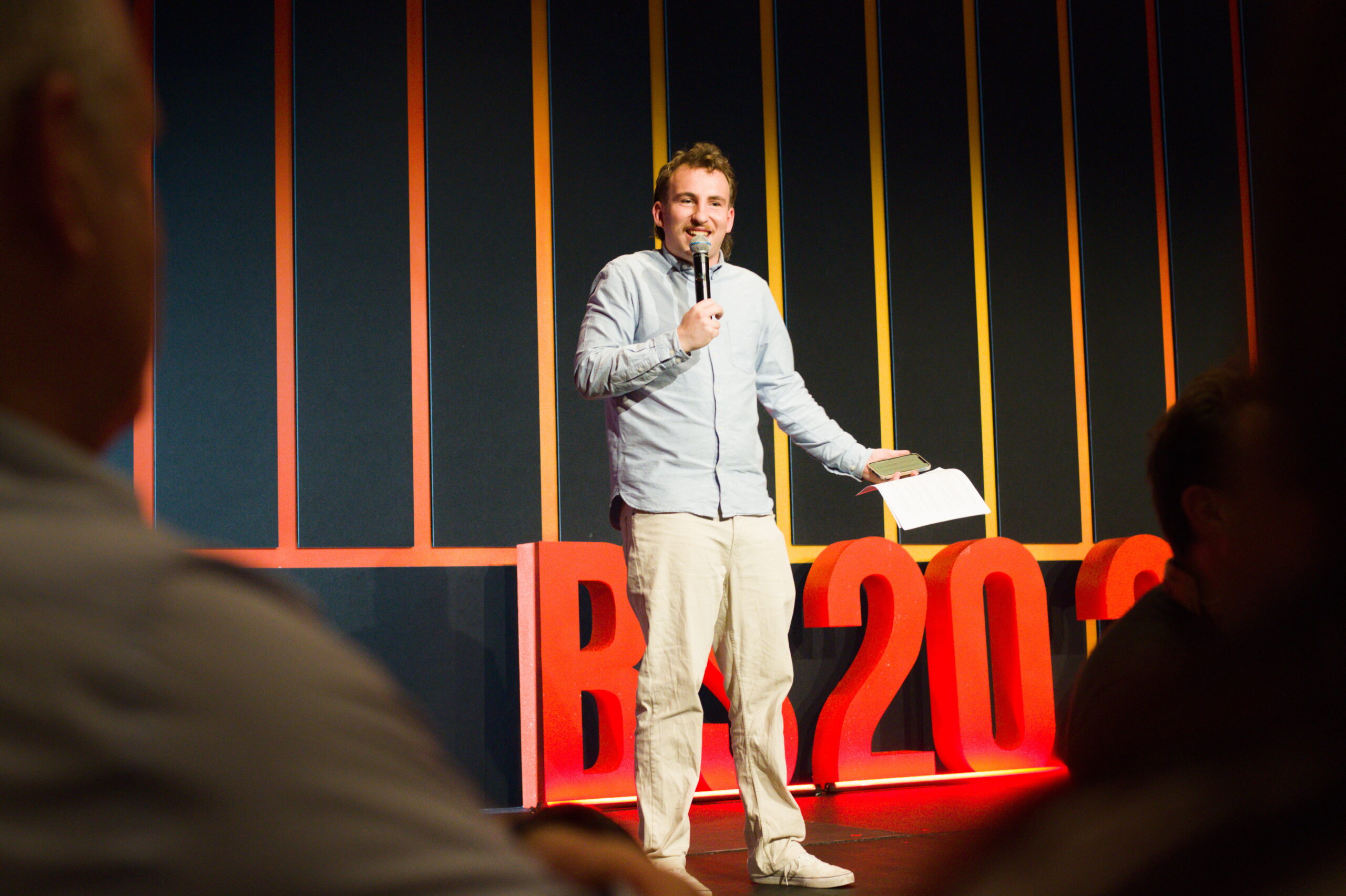

While BS2025 wasn’t as HVAC&R-focused as most of AIRAH’s conferences and events, some regularly featured topics – including indoor air quality (IAQ) – were still firmly on the agenda. Philipp Schluter from Camfil spoke about how simulation can be used to model life-cycle costs for HVAC filtration systems, taking into account factors such as labour, energy use, carbon emissions, and reduced occupant sickness, as well as initial capital expenditure.
Schluter pointed out that few – if any – existing energy use models take air filtration into account when modelling energy performance, despite the fact that energy use associated with filters is likely responsible for around 3.6 million tons of carbon dioxide in Australia annually. He argued that a more comprehensive modelling framework would help building owners and managers make more informed decisions about filter selection.
The social aspect of building simulation
While some of the high-tech projects on display at BS2025 stole the limelight, the conference also included some fascinating insights into how simulation can be used for social good in a wide range of situations.
One example of this was delivered by Professor Neveen Hamza, whose presentation focused on improving the thermal performance of housing in mountainous rural China using corn husks as insulation. Internal temperatures in the houses – which were made from uninsulated concrete blocks – regularly dropped below zero during winter. While the corn husks were far from a perfect solution, they managed to increase internal temperatures by several degrees, showing what could be achieved with zero waste and minimal cost.
Another fascinating insight came from Elaina Rose Render, whose research examines the potential for using building simulation to repaired damaged structures in warzones without necessarily needing to knock them down and rebuild from scratch. In her presentation, Render explained how existing disaster-response simulation – including using drones to conduct detailed building scans – could be further adapted to operate in conflict zones, potentially saving billions of dollars in reconstruction efforts, while also improving the energy performance of existing homes in these areas.
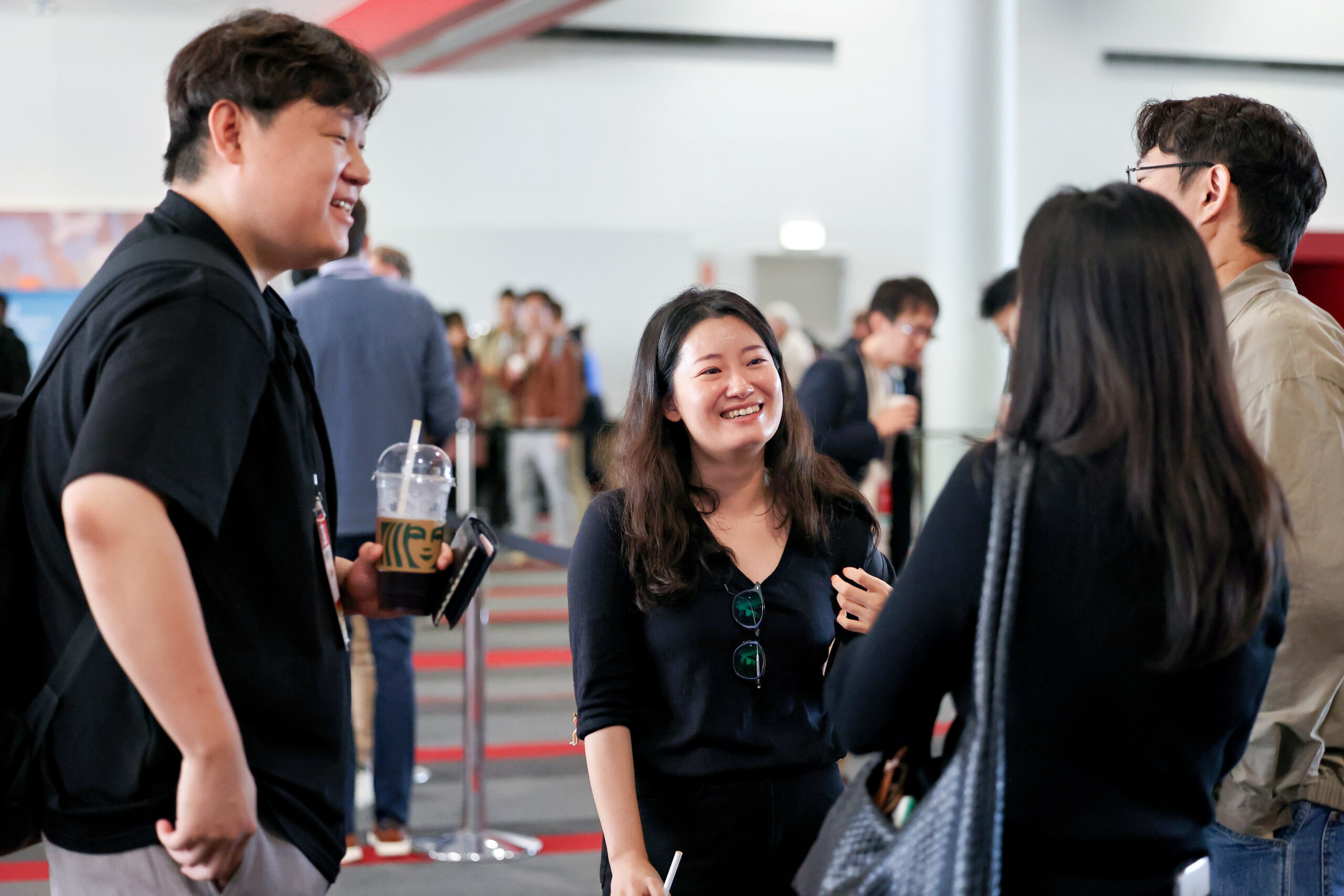

Another interesting topic covered during the conference was the idea of using simulation techniques to model the social acceptability of new technologies. Professor Massimo Fiorentini applied this concept to thermal energy storage in Switzerland, finding that although phase-change materials offer the best size-to-performance ratio for energy storage, the public’s greater understanding of and comfort with water means that this technology is more likely to be socially accepted, and could potentially prove more cost effective in the long term.
More than just new ideas
Of course, it’s impossible to cover more than 400 presentations in a brief article, just as it was impossible for anyone to attend every session at BS2025. But attendees discovered that the conference meant much more than just engaging with presentations; the many opportunities to network at events like the welcome function, the gala dinner, and the farewell drinks were just as valuable. This was especially the case for some of the younger attendees, who had the chance to cross paths with some of the most influential figures in the world of building simulation.
“The feedback has been really positive,” Karekla says of her discussions with conference delegates. “Attendees appreciated the real-world focus of the sessions and the blend of academic and industry perspectives. There was strong engagement during Q&As and a lot of valuable conversations between sessions.”
It was a full-on week, but for those who attended BS2025, it’s one they won’t forget any time soon.
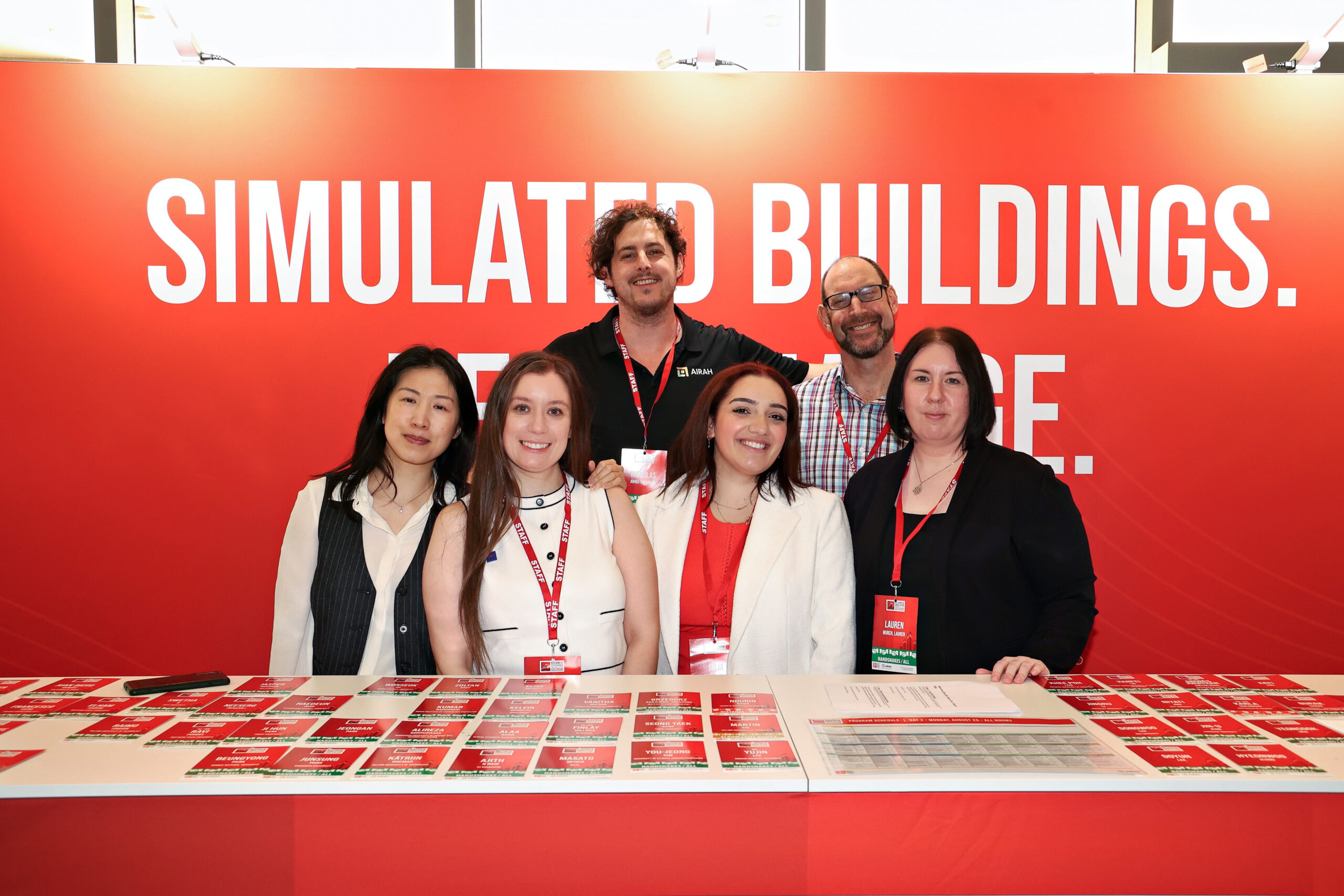

Images courtesy of Grace Mac Photography
PREV
NEXT
Comments
Advertisements
Recent news
- 2025 AIRAH National Awards: Bryon Price, L.AIRAH, awarded the James Harrison Medal
- 2025 AIRAH National Awards: Stefan Jensen, L.AIRAH, wins WR Ahern Award
- 2025 AIRAH National Awards: Brett Fairweather, F.AIRAH, wins Excellence in Knowledge Building
Latest events
- 2025 AIRAH National Awards: Bryon Price, L.AIRAH, awarded the James Harrison Medal
- 2025 AIRAH National Awards: Stefan Jensen, L.AIRAH, wins WR Ahern Award
- 2025 AIRAH National Awards: Brett Fairweather, F.AIRAH, wins Excellence in Knowledge Building
 Nick Johns-Wickberg
Nick Johns-Wickberg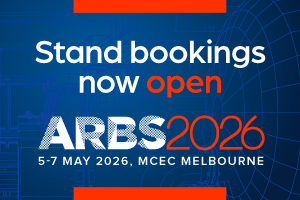

Leave a Reply